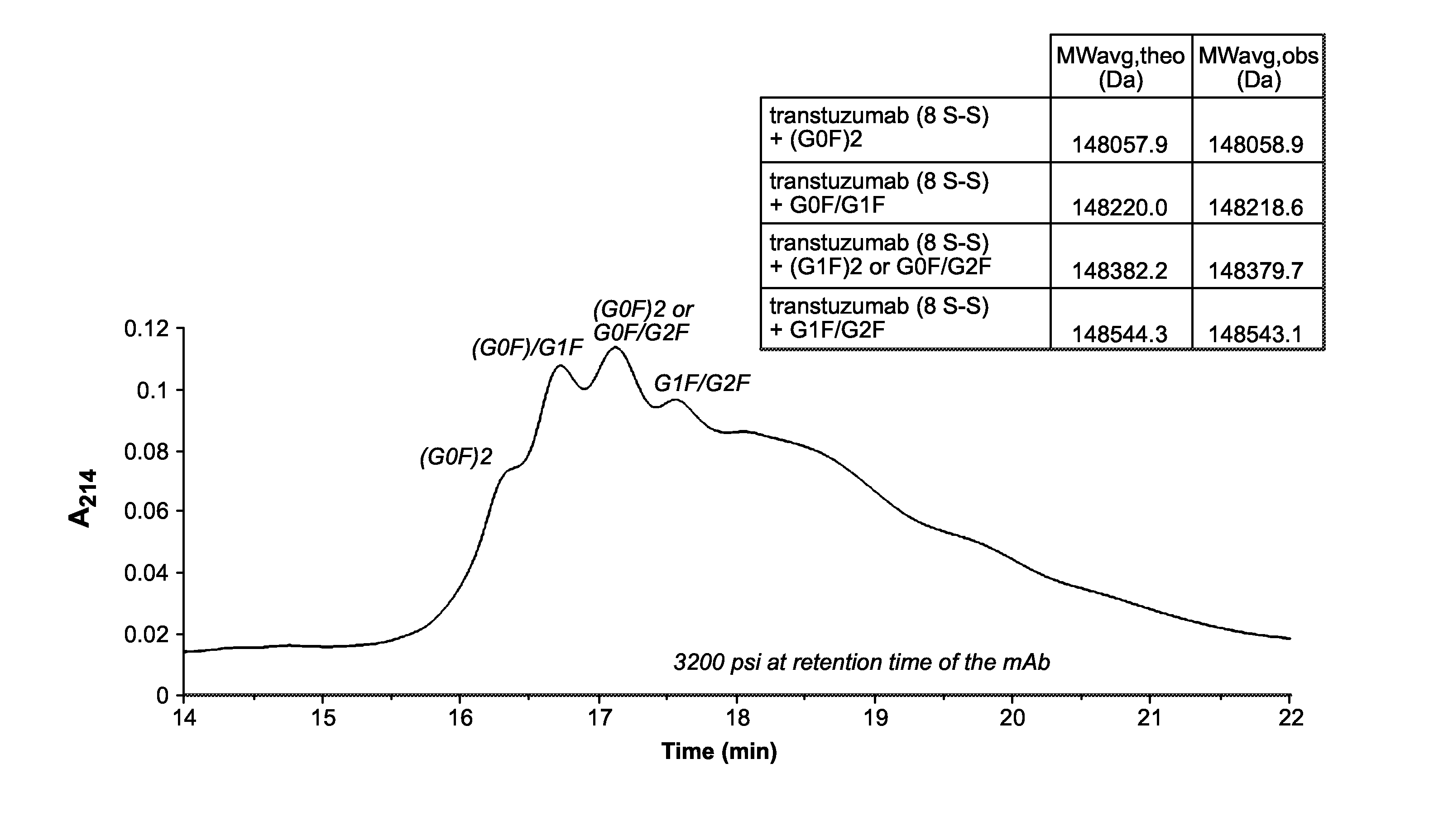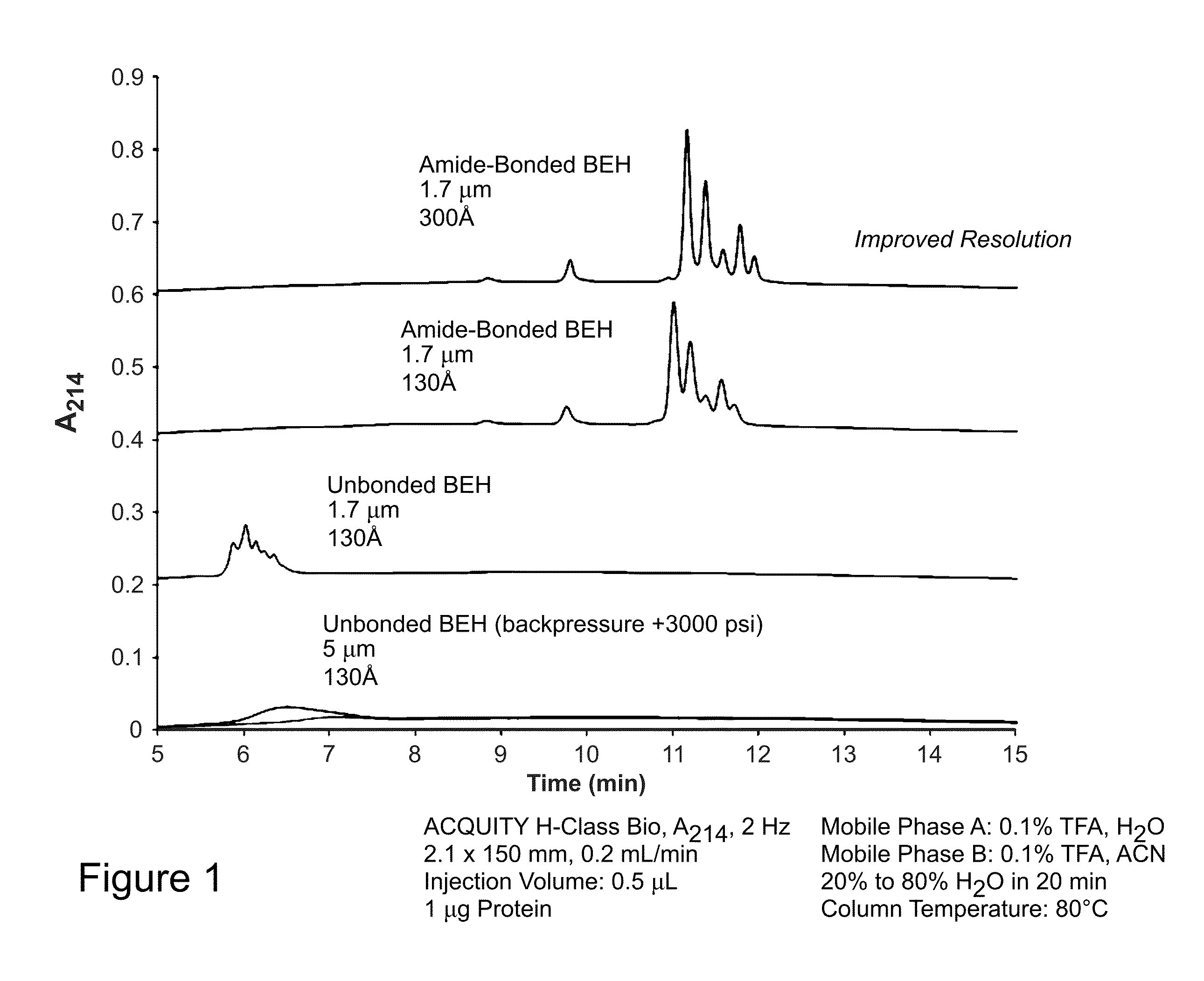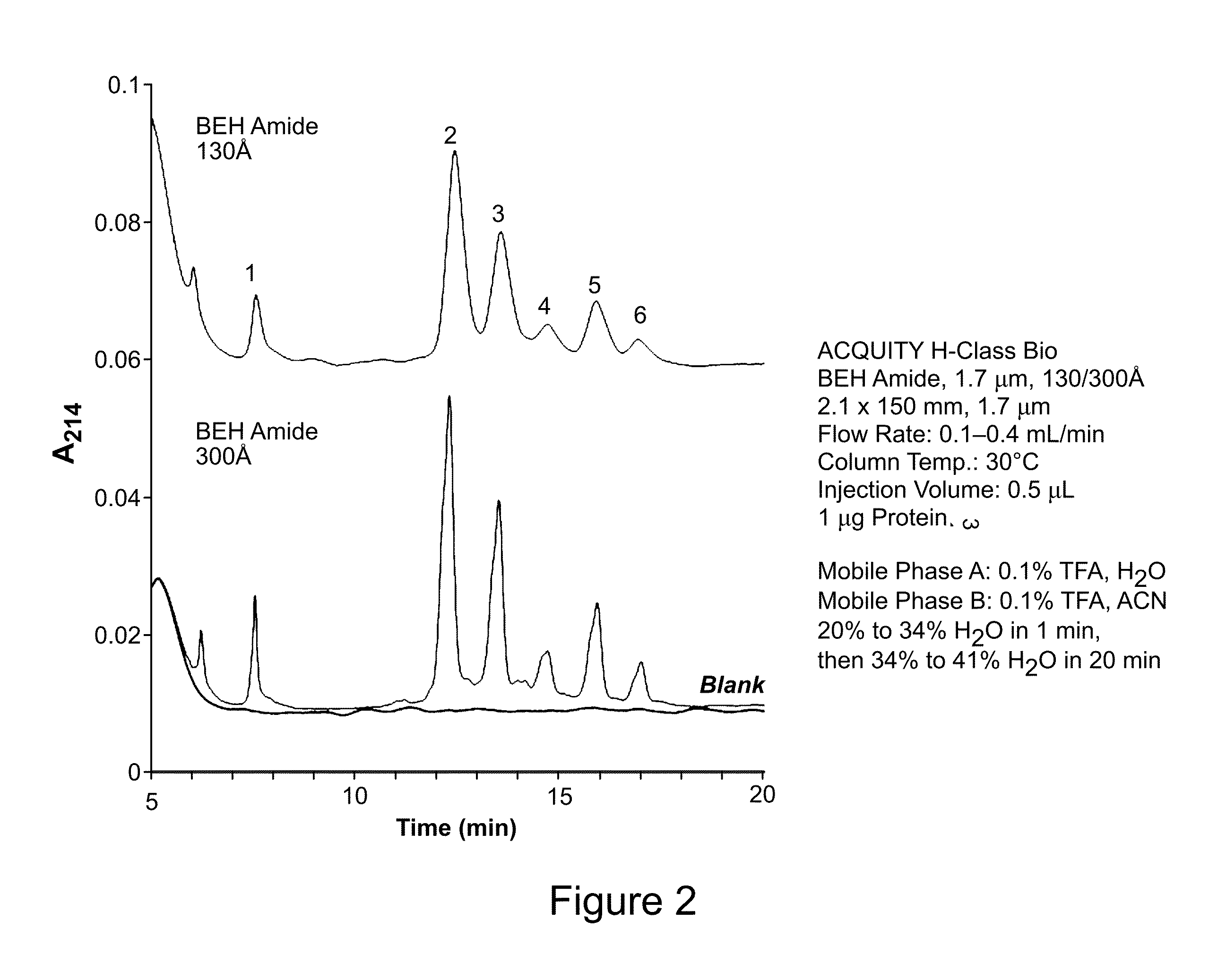Materials for hydrophilic interaction chromatography and processes for preparation and use thereof for analysis of glycoproteins and glycopeptides
a technology of hydrophilic interaction and chromatography, which is applied in the direction of separation process, chemistry apparatus and process, and instruments, can solve the problems of limited separation of small (20 kda) glycoproteins, and the presented work is limited to small (20 kda) glycoproteins, and achieves the desirable retentivity and selectivity of glycans/glycoforms, high resolution of large biomolecules, and efficient separation of large biomolecules
- Summary
- Abstract
- Description
- Claims
- Application Information
AI Technical Summary
Benefits of technology
Problems solved by technology
Method used
Image
Examples
example 1
[0301]Porous ethylene-bridged hybrid particles (60 g, 1.80 μm, SSA=88 m2 / g; SPV=0.66 cm3 / g; APD=300 Å; 6.41% C), prepared following the method described in U.S. Pat. No. 6,686,035, were surface modified using a modified process as detailed in U.S. Pat. No. 4,835,058 A, Example 6, in which 3-methacryloxypropyltrimethoxysilane was replaced with 3-methacryloxypropyltrichlorosilane. In this process the methacryloxypropyl surface modified particles were exposed to an acetone / ammonium acetate solution similar to that detailed in U.S. Pat. No. 6,686,035, example 24. The product of this reaction had 7.65% C.
example 2
[0302]The material of Example 1 was further reacted with acrylamide and potassium persulfate in a methanol solution as detailed in U.S. Pat. No. 4,835,058 A, Example 6. The product is dried in a vacuum oven at 30-50° C. The product of this reaction had 1.12-1.20% N.
example 3
[0303]The process of Example 1 and 2 is modified replacing 3-methacryloxypropyltrichlorosilane with one or more of the following; 3-methacryloxypropylmethyldichlorosilane, 3-methacryloxypropyldimethylchlorosilane, 3-methacryloxypropyltrimethoxysilane, 3-methacryloxypropylmethyldimethoxysilane, 3-methacryloxypropyldimethylmethoxysilane, 3-methacryloxypropyltriethoxysilane, 3-methacryloxypropylmethyldiethoxysilane, 3-methacryloxypropyldimethylethoxysilane, 3-acryloxypropyltrichlorosilane, 3-acryloxypropylmethyldichlorosilane, 3-acryloxypropyldimethylchlorosilane 3-acryloxypropyltrimethoxysilane, 3-acryloxypropylmethyldimethoxysilane, 3-acryloxypropyldimethylmethoxysilane, 3-acryloxypropyltriethoxysilane, 3-acryloxypropylmethyldiethoxysilane, 3-acryloxypropyldimethylethoxysilane, styrylethyltrichlorosilane, styrylethylmethyldichlorosilane, styrylethyldimethylchlorosilane, styrylethyltrimethoxysilane, styrylethylmethyldimethoxysilane, styrylethyldimethylmethoxysilane, styrylethyltrietho...
PUM
| Property | Measurement | Unit |
|---|---|---|
| temperature | aaaaa | aaaaa |
| temperature | aaaaa | aaaaa |
| pressure | aaaaa | aaaaa |
Abstract
Description
Claims
Application Information
 Login to View More
Login to View More - R&D
- Intellectual Property
- Life Sciences
- Materials
- Tech Scout
- Unparalleled Data Quality
- Higher Quality Content
- 60% Fewer Hallucinations
Browse by: Latest US Patents, China's latest patents, Technical Efficacy Thesaurus, Application Domain, Technology Topic, Popular Technical Reports.
© 2025 PatSnap. All rights reserved.Legal|Privacy policy|Modern Slavery Act Transparency Statement|Sitemap|About US| Contact US: help@patsnap.com



